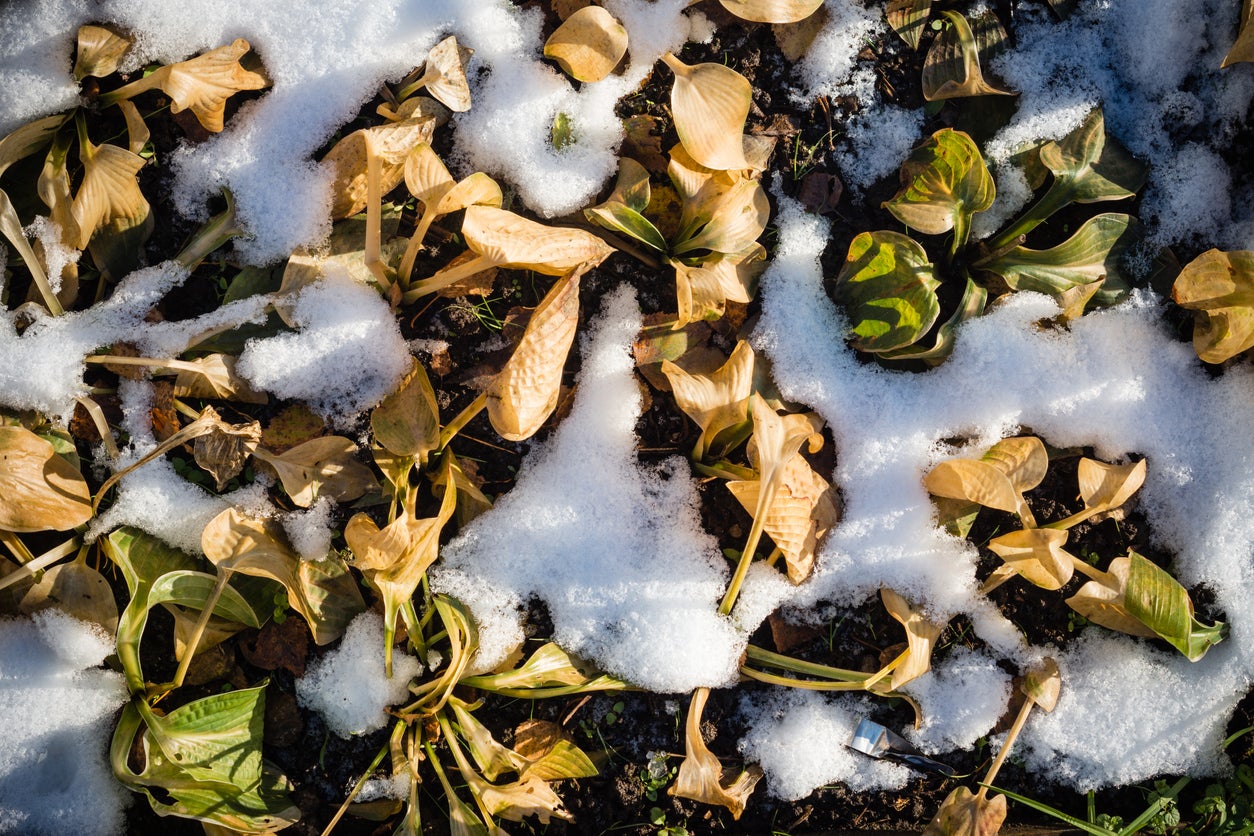
How To Prepare And Care For Hostas In Winter
Wondering how to prepare hostas for the winter? Your gorgeous low-growing perennial hostas are usually planted in a shade garden. As winter approaches hosta lovers might be wondering how to winterize hosta plants. Or do hostas die back in winter? It turns out that hosta winter care varies. Some say to cut the plant back, some say to mulch, and some choose to leave the plant alone. Here’s what we have to say on hosta winter care.
Do Hostas Die Back in Winter?
Herbaceous perennials hardy to USDA zones 3-4, hostas have short spreading rhizomes. In the spring, their broad foliage emerges from the crown.
In the winter, hostas become dormant. They require a chilling period of 600-700 hours (vernalization) during which the hormone responsible for dormancy breaks down in preparation for the plant’s growth. Hostas, therefore, look dead during the winter, but they aren’t actually dead.
As to how to prepare hostas for winter? This is a polarizing question. Some say leave the foliage, dead or not, on the plant. Others say to remove the leaves as they can foster fungal disease and provide a habitat for slugs and snails.
Those who opt to leave the leaves contend that the leaves protect the plant during the winter and then break down to add nutrients into the soil. They also help to keep the roots cool in the early spring so growth doesn’t emerge too early.
How to Prepare Hostas for Winter
Both points make sense. How you prepare your hostas for winter likely depends on your location. If your area is prone to frost with snow or continuous freezing temps soon afterward, it is fine to leave the foliage on the plant but you should still mulch. If you are in a more temperate region, it might be a good idea to remove the dying leaves so no critters or fungal diseases can hide out.
There is one final caveat however. If you area is prone to voles, leaving the leaves on the plants will be the death knell for your hostas. The voles will understand this to mean you have left them a weather covering under which they will dig a network of tunnels while snacking on your hostas.
Sign up for the Gardening Know How newsletter today and receive a free copy of our e-book "How to Grow Delicious Tomatoes".
How to Care for Hostas in Winter
So, since hosta winter care is up to the individual and region, what should you do with your hostas? If you do choose to cut the foliage back, do so when the leaves are limp and faded.
If you know you have nematodes, this is a great time to remove the microscopic roundworms that live and feed on hosta leaves. Symptoms of nematode feeding begin in the early summer and present as yellow discolorings followed by brown streaks among the veining. Dispose of any infested foliage.
On the subject of pests, now would be the time to address voles if you have them. As above, remove the leaves and set out repellents or traps.
Mature hostas that have been in the ground for a full growing season don't usually need winter protection. That said, they will benefit from a good layer of winter mulch in the form of weed-free straw or pine needles applied in mid to late November. This layer will protect the plants from freezing and thawing cycles during the winter. Remove the mulch in the spring.
Frequently Asked Questions
What Do Hostas Look Like in Winter?
Hostas naturally die back for the winter. When the first frost hits, the leaves wilt to the ground, change color and if left on the plant, eventually rot.
Why Did My Hosta Not Come Back?
If you have a hosta that hasn’t come back after the winter it is likely due to one of two things. 1.Mice or voles. 2.Extreme freezing and thawing cycles.
Take steps to remove voles in the fall so they don’t overwinter in your hostas roots, and cover the crowns of the plant with a layer of weed-free straw or pine needles in mid- November to protect the plants from heaving.

Amy Grant has been gardening for 30 years and writing for 15. A professional chef and caterer, Amy's area of expertise is culinary gardening.
